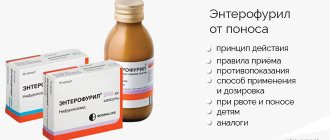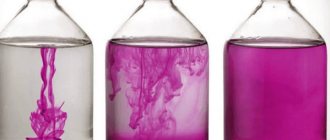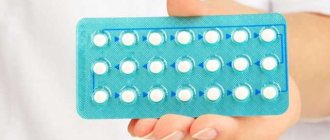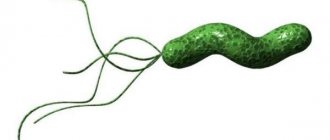Differences between rotavirus infection and food poisoning. What tests show rotavirus and poisoning. Exclusively for the site svetulka.ru
Disturbances in the functioning of the digestive system, accompanied by abdominal pain, diarrhea, and vomiting, are a fairly common problem that a person can encounter at any age. The disorder can be caused by poor-quality food, contaminated water, unwashed hands, as well as viruses, bacteria and protozoan microorganisms.
Very often, different diseases have similar symptoms, which greatly complicates the diagnosis and choice of treatment tactics. A similar situation is typical for rotavirus infection, which is often confused with poisoning. Both are rather unpleasant and dangerous conditions that require medical attention.
In order for the doctor to prescribe the correct treatment, it is necessary to correctly diagnose the patient. To do this, you need to know the differences between rotavirus infection (stomach flu) and food poisoning. After all, not all drugs that can help with gastrointestinal disorders act on viruses. To understand the difference between these conditions, let's look at their causes and symptoms.
Causes and symptoms of poisoning
Food poisoning occurs after eating with dirty hands or eating low-quality or poorly processed foods (undercooked meat or fish, improperly stored dairy products, unwashed vegetables and fruits, etc.). Its cause is the proliferation of a large number of pathogenic bacteria that produce toxins (most often E. coli or staphylococcus).
Signs of poisoning appear on average 30 minutes to 6 hours after pathogens enter the body. In rare cases, the incubation period can last up to a day. The main manifestations of food poisoning are: pain and cramps, a feeling of heaviness in the abdomen, nausea, vomiting, diarrhea caused by the inflammatory process in the intestines.
Due to intoxication, the body temperature may rise slightly, chills, dizziness, muscle pain and general malaise may develop. Prolonged stool upset, repeated vomiting without replenishing the water-salt balance can lead to dehydration after poisoning and the addition of symptoms such as thirst, dry mouth, decreased amount of urination, weakness, tachycardia.
Most often, the symptoms are the same in all victims and appear at approximately the same time. Poisoning is not contagious, so the patient is not dangerous to others. In fact, food poisoning is a fairly general concept. Malaise can also develop when salts of heavy metals, chemicals, and toxic substances enter the body.
Symptoms may be similar to ordinary poisoning, but in especially severe cases, when the body is severely damaged by dangerous toxins, serious reactions can begin, including convulsions, paralysis, etc.
Similarities and differences in treatment
Differences in methods of treating diseases:
- In case of poisoning, gastric lavage and intestinal cleansing are effective. The patient drinks large amounts of water and then induces vomiting. The procedure is repeated until clean water comes out instead of vomit. The intestines are emptied using an enema. For viral infections of the gastrointestinal tract, these procedures are ineffective. The virus quickly penetrates the mucous membranes.
- The use of detoxifying agents and sorbents. The drugs capture and remove toxins, preventing the further development of poisoning. Remedies for food intoxication quickly eliminate diarrhea. For rotavirus infection, medications are not always effective. The virus is eliminated from the body faster in feces. Sometimes antidiarrheals (Stopdiar) are prescribed for infections.
- Use of antipyretics. In case of poisoning, the fever can be reduced with Paracetamol or Ibuprofen. Rotavirus dies at high temperatures, so drugs are not used for intestinal infections.
- Anesthesia. To relieve spasms in case of poisoning, Spazmalgon or No-shpu is prescribed. For rotavirus infections of the digestive system, medications are used less frequently.
- Use of antibiotics. The drugs are effective in treating diseases caused by eating food contaminated with bacteria. They do not act on viruses and are useless in the case of rotavirus intestinal damage.
General points in therapy:
- Restoring water balance. In both diseases, diarrhea leads to fluid loss, the deficiency of which must be replenished. A solution of glucose or sodium chloride is administered, Trihydron or Regidron is taken. It is recommended to consume at least 2 liters of pure water or sweet tea per day.
- Restoration of intestinal microflora. After the acute signs of poisoning or infection disappear, the treatment regimen is supplemented with probiotics (Bifidumbacterin, Linex). The products restore the number of beneficial bacteria, ensuring normal intestinal function.
Symptoms of rotavirus infection
Although rotavirus infection is similar in symptoms to poisoning, it still has obvious differences. The incubation period of rotavirus infection ranges from 1 to 5 days. Rotavirus usually begins acutely: severe repeated vomiting, frequent bowel movements, weakness, abdominal pain, increased gas formation and lack of appetite. This condition is accompanied by a sore throat, sometimes cough, runny nose, increased body temperature (up to 39°C), weakness and lethargy, and the appearance of a white coating on the tongue.
The patient may also have reddened eye conjunctivae, darkened urine, and a change in the color of stool (with rotavirus, stool becomes light and heterogeneous and may contain inclusions of blood). Intestinal upset and vomiting lead to dehydration (dehydration, dry mucous membranes, sudden weight loss). This condition can last from 3 to 7 days. If symptoms of severe intoxication and a severe course of rotavirus persist, the patient is hospitalized.
Rotavirus infection is severe in children; adults usually tolerate the disease easily, without any complications. Rotavirus infection can lead to temporary secondary lactase deficiency, which is characterized by poor digestibility of dairy products, upon consumption of which the patient again begins to experience something like diarrhea. The spreader of rotavirus is a sick person or a healthy carrier. Infection occurs by airborne droplets or fecal-oral route.
Once in the body, the virus quickly multiplies on the mucous membrane of the digestive tract, causing disruption of the gastrointestinal tract, and then is gradually eliminated from the body in the feces. Symptoms of rotavirus can vary greatly from person to person. A person remains contagious after rotavirus for another 10 days. When re-infected with rotavirus infection, the disease most often is not so acute. Most people suffer from rotavirus in childhood, since the acidity of the gastric juice is lower in children, and the viruses enter the intestines almost unhindered and begin to multiply.
Clinical differences
To understand the difference between these pathologies, it is necessary to carefully consider the factors leading to the problem:
- Rotavirus is contagious. You can catch it either from a sick person or from a hidden carrier of the infection. The rate of spread is high - the patient may not yet be aware of the lesion, but the pathogen has already settled in the gastrointestinal tract. It is excreted along with feces as soon as it enters the intestines. The body develops immunity to the agent and recurrent cases are extremely rare.
- Food poisoning develops as a result of the activity of pathogenic bacteria and the negative effects of toxic substances. It cannot be passed on to another, but it can be suffered repeatedly.
Another sign that allows you to distinguish rotavirus from banal intoxication is that it is characterized by seasonal outbreaks, and you can be poisoned at any time of the year.
What tests are taken for poisoning and rotavirus?
There are certain laboratory diagnostics that can confirm that a patient has rotavirus or food poisoning in order to prescribe the correct treatment. It includes: general analysis of blood, urine, feces. With rotavirus infection, a complete blood count usually shows moderate leukocytosis, followed by leukopenia (decreased white blood cell count). Lymphocytes are elevated, and monocytes may also be elevated. ESR with rotavirus is most often normal.
With a bacterial infection (food poisoning), the number of leukocytes and ESR increases, while lymphocytes are usually decreased. Read more about the difference between a viral blood picture and a bacterial one here. And in the case of a blood test for disorders of the gastrointestinal tract, it is worth remembering that it is not possible to objectively assess the patient’s condition using one laboratory test, since the symptoms may be different.
A general urine test for rotavirus may reveal an increased number of white blood cells, protein (albuminuria) and red blood cells (hematuria). Urine becomes dark in color. In a patient with poisoning, there are no significant changes in urine analysis. Lastly, if a rotavirus infection is suspected, a stool analysis is performed, since the number of microorganisms in the stool that is significant for diagnosis appears only 3-5 days from the onset of the disease. The presence of rotavirus is confirmed by detection of the rotavirus antigen VP6.
In case of poisoning, feces are most often submitted for bacteriological culture and testing for certain intestinal groups. Bacterial culture allows not only to identify the pathogen, but also to determine its sensitivity to antibacterial and antimicrobial drugs. There are also rapid tests for detecting rotavirus infection (Rota tests), but finding them on the open market is not so easy. They are not used that often.
Differences between poisoning and rotavirus
Based on the signs, you can understand rotavirus or poisoning using the following criteria.
- Rotavirus is characterized by an increase in body temperature that can last for several days.
- We must not forget that rotavirus is most often a seasonal disease and is transmitted to other people. Moreover, this disease mainly affects young children aged from six months to one year, who are no longer fed breast milk, and as a result, their immunity and protective functions of the entire body decrease. And food poisoning is associated with the consumption of low-quality products, and is not transmitted from a sick person to a healthy one. This disease can affect both adults and children who have eaten foods that have been contaminated with various bacteria.
- Most people who have contracted a rotavirus infection, in addition to vomiting, a sharp increase in body temperature, and diarrhea, have symptoms of a viral disease - runny nose, headache, cough, a red throat and a feeling of pain when swallowing. The characteristic stool for this type of disease is quite frequent on the first day, but on the second day it acquires a grayish-yellow tint and becomes clay-like. In this case, the urine becomes very dark, sometimes even with the presence of blood.
- Rotavirus is usually characterized by a sequential disease of all members of the family or team in which the sick person was. In case of poisoning, all those who consumed the contaminated product become ill at the same time.
- In addition, the difference between poisoning and rotavirus is that with rotavirus, there is a red throat and eyes, nasal congestion and rare coughing. Poisoning does not contain such signs, although in many ways these diseases are very similar.
Despite the fact that many of the symptoms and principles of rotavirus infection and food poisoning are similar, they still have certain differences, and in order to properly treat a particular disease, it is first necessary to determine its type. Best of all, a doctor will do this!
The main differences between rotavirus infection and poisoning
In fact, despite the similar symptoms, the virus and rotavirus have quite specific differences that make it possible not to confuse these conditions.
How to distinguish rotavirus from food poisoning:
Duration of the disease:
- symptoms of poisoning usually occur quickly and almost simultaneously in all victims;
- the incubation period of rotavirus infection can be up to 5 days and begins to manifest itself differently as the virus activates in a particular organism (especially in children and adults)
Clinical manifestations:
- high fever, repeated vomiting and diarrhea, along with damage to the mucous membrane (redness of the eyes, throat, runny nose, cough), changes in the color of urine and feces are characteristic of a viral infection; intestinal spasms do not go away even after vomiting and defecation
- poisoning never occurs with symptoms similar to acute respiratory infections, with only gastrointestinal upset, general weakness due to intoxication, and sometimes a slight increase in body temperature; after vomiting in case of poisoning, relief comes
What is the difference between rotavirus and poisoning?
Rotavirus and poisoning are diseases that often occur in childhood, but also occur in adults. Such conditions are similar in symptoms and are very dangerous if the right measures are not taken in time to improve a person’s well-being and restore balance in his body. Let's find out how to distinguish rotavirus from poisoning and what to do in each case. Rotavirus is a form of intestinal infection. The disease has other names - intestinal flu and rotavirus gastroenteritis. The source of infection is usually a sick person, and the disease itself spreads very quickly through a group of people who communicate closely with each other. The main mode of transmission of infection is fecal-oral. Due to the nature of its spread, rotavirus most often occurs in childhood. After all, this period of life is a time of special curiosity, when a child puts everything in his mouth, examines objects by taste, and communicates closely with other children.
What is poisoning
Poisoning is the entry of toxins and poisons into the body, as well as the resulting disruption of the functioning of organs and systems of the human body. This condition can be of several types, depending on the route of penetration of harmful substances into the body:
- inhalation, that is, when poisons and toxins enter through the respiratory tract, such as gas poisoning;
- oral, when a toxic substance has entered the human body through the mouth, including the most common food poisoning;
- injection, when the poison entered through intramuscular and intravenous injections;
- percutaneous, when toxins and harmful substances enter the body through skin pores and open wound surfaces.
Usually people of different ages suffer from food poisoning. They are caused by eating stale and low-quality foods and drinks. Finding out from a person what he ate, drank, and did before his health worsened, most often helps the doctor distinguish poisoning from rotavirus infection and make a preliminary diagnosis.
What is the difference between rotavirus and poisoning?
Differences in the causes of diseases
Rotavirus is an infection that is quickly transmitted from a sick person or from a person carrying the virus to a healthy person in contact with him. In this case, the disease affects the entire group of children or adults and quickly spreads to all household members. The causes of poisoning are chemicals, toxins released by microorganisms, as well as other harmful substances. The main source of this condition is food and drinks that have expired, were improperly stored, or contain harmful substances (for example, alcohol). Sometimes the cause of poisoning is carelessness, when an adult or child, by mistake or out of curiosity, eats something obviously harmful, for example, cologne, detergents, or medications in unacceptable dosages.
Symptom differences
The symptoms of rotavirus and poisoning are very similar. It is because of their manifestations that these two conditions are often confused with each other. Moreover, in both cases, the signs can be either bright or barely noticeable. Sometimes rotavirus and poisoning are asymptomatic and are accompanied only by slight weakness, occasional diarrhea, or a slight decrease in appetite. However, there are differences in symptoms. The main symptoms of rotavirus infection are:
- change in color of the mucous membrane in the mouth and throat, coating on the tongue;
- coughing and nasal congestion;
- lethargy, drowsiness and apathy;
- feverish condition;
- high temperature, especially characteristic of childhood;
- weakness and decreased performance;
- nasal congestion and coughing;
- stomach ache;
- complete refusal of food;
- frequent vomiting;
- redness of the throat and conjunctiva;
- loose stools with an unpleasant sour odor.
After a day without proper treatment for rotavirus, the human body begins to suffer from intoxication and dehydration, which can lead to serious consequences. Within a few days the patient loses weight. When appropriate treatment is selected, symptoms subside the very next day. And complete recovery occurs in 3-7 days. Poisoning has similar, but slightly different symptoms than rotavirus. Inflammation of the intestinal mucosa leads to the appearance of symptoms of body intoxication and dehydration, such as:
- feverish condition;
- weakness and lethargy;
- muscle and head pain;
- reduction in the number of urinations;
- vomiting, nausea, dizziness;
- increased body temperature;
- the appearance of thirst and dry mouth;
- frequent diarrhea;
- increased heart rate;
- nervous and visual disorders;
- retraction of the fontanelle in childhood.
With proper treatment, recovery of the body after simple poisoning lasts about 5-7 days. But in particularly difficult cases, this period can drag on for several weeks or even months. Unlike rotavirus, poisoning in adults and children most often begins quickly and immediately in everyone who ate together. When an infection occurs, either 1 family member or all of them are usually sick, but symptoms begin to appear in everyone in turn. The incubation period for poisoning is 1.5-3 hours.
Important! If you find these symptoms in yourself or your loved ones, you should not wait - you should immediately consult a doctor. When a child is poisoned or infected with rotavirus, call an ambulance.
Differences in the course of the disease
There are also differences between the course of rotavirus infection and poisoning:
- Rotavirus is characterized by high fever. This is typical for poisoning only in difficult cases and in childhood.
- Rotavirus is a seasonal disease, and poisoning can occur at any time of the year.
- They will help you distinguish between rotavirus infection and the symptoms that you observe in the patient or in yourself. In the case of rotavirus, in addition to weakness, nausea and vomiting, loose stools, symptoms of the virus appear - nasal congestion, coughing and headache. In case of poisoning, this is not observed, but pain in the muscles and head may appear.
- If you don’t know whether you have poisoning or rotavirus, then pay attention to the stool, which differs in smell and frequency of urge. With rotavirus, it is more foul-smelling, having a grayish-yellow tint. Urine also changes color and becomes dark
- Rotavirus usually affects the entire school or kindergarten team, all household members who come into close contact with each other. And poisoning occurs only in those who have eaten the same foods of dubious quality.
- Poisoning is not contagious, which is different from enterovirus infection.
- It is possible to distinguish infection from poisoning by the condition of the mucous membranes. In the first case, all mucous membranes are affected, and in the second, only the digestive system.
Differences in treatment
There are also differences in the treatment of both diseases. In case of poisoning, it is necessary to rinse the stomach as soon as possible, but in case of rotavirus this activity is not carried out. Moreover, in case of poisoning, rinsing is carried out until only clean water comes back. Treatment for this condition consists of relieving the symptoms of intoxication in the body and restoring balance in it. For this purpose:
- sorbent preparations that remove toxins and poisons, for example, Enterosgel, activated carbon, Smecta, Polysorb;
- cleansing enemas;
- drugs to restore water balance, for example, Regidron;
- means for restoring intestinal microflora, for example, Bifdumbacterin, Linex.
Rotavirus is also treated by taking medications, but their set is slightly different:
- antipyretics to eliminate temperatures above 38.5C, which is usually only necessary in childhood;
- sorbent products, including Smecta, activated carbon, Polysorb, Enterosgel;
- preparations for restoring water balance Regidron, Trihydron and others;
- antidiarrheals, for example, Nifuroxazide, Stopdiar, Entrofuril;
- drugs to eliminate abdominal pain, including Baralgin and Spazmolgon.
Important! The difference between poisoning and rotavirus is not always obvious. Incorrect treatment can cause complications. Therefore, only a doctor can prescribe the necessary medications. Before it arrives, if you suspect rotavirus, you can take a sorbent, medications to restore water balance, and an antipyretic. If you suspect food poisoning, you should call an ambulance and try to rinse your stomach. If the symptoms of this disease are not bright and are observed in adults, then you can only get by by taking sorbents.
As you can see, poisoning and rotavirus are very similar, but they are completely different in terms of their causes and methods of treating diseases. They can be cured without any consequences for the body, but to do this, it is necessary to start therapy as quickly as possible and select the most suitable means. A specialist will help you do this. Poisoning and rotavirus are especially dangerous in children, so do not rely on your own strength, but immediately seek medical help.
How to treat rotavirus and poisoning
What medications help against rotavirus? What to take if you are poisoned? Poisoning and rotavirus infection, although they have similar symptoms, are treated slightly differently. In case of poisoning, the antimicrobial drug Enterofuril (Nifuroxazide), Enterol or Smecta (antidiarrheals) is most often prescribed. In the case of dysentery and salmonellosis, antibiotics cannot be avoided. Gastric lavage is also possible. For pain and spasms, you can take No-shpa.
There are no drugs to treat rotavirus infection as such; treatment is usually symptomatic. But sometimes with rotavirus, the doctor can prescribe antiviral drugs to the patient (Amiksin, Tsitovir). To prevent diarrhea, Smecta, Stopdiar, Enterol are used. Cerucal stops severe vomiting. Gastric lavage for rotavirus is not advisable, since the virus actively develops in the blood.
In both cases, to prevent dehydration of the body, rehydration therapy (replenishment of water-salt balance) with Regidron or Humana electrolyte, removal of toxins and waste products of pathogenic microorganisms with the help of sorbents (Polysorb, Enterosgel), activated carbon and adherence to a gentle diet are required.
To restore and maintain intestinal microflora after poisoning and rotavirus infection, a course of medications with beneficial bacteria (Normoflorins, Bifiform, Linex, etc.) is recommended. To improve the digestion process, the doctor may also prescribe enzymes (Creon, Pangrol, Mezim, etc.).
What can you eat after poisoning? It is advisable for a patient with poisoning to fast for the first day. If you have rotavirus, you can, in principle, eat, but in small portions. The main thing is to exclude dairy products, fried foods, canned food, smoked foods, semi-finished products, and sweets from the diet. The food requirement for intestinal infections is gentle. You can read more about how to eat after vomiting and diarrhea here.
Treatment
In addition to differences in the causes and symptoms, there are differences in the treatment of these two pathologies. Although, there are still some similarities in treatment.
Gastric lavage
If intoxication occurs due to poisoning, the stomach is washed. It is cleaned of bacteria that have got there or formed in it after the penetration of spoiled products. Cleansing is carried out by drinking copious amounts of fluid and inducing vomiting.
You need to drink at least two liters of water
All these manipulations are useless with rotavirus, which “settles” in the small intestine. Cleansing the stomach will not help; the virus will continue to destroy the villi, destroying the digestive process.
Important! In children under two years of age, who may equally be sick with rotavirus or become intoxicated, vomiting cannot be artificially induced. You should also not wash your children’s stomachs at home.
Diarrhea
After gastric lavage, when the vomit comes out clean, in case of poisoning, it is time for sorbents. They are needed to remove toxins that have entered the blood. Medicines to stop diarrhea are also started.
After gastric lavage, you can take sorbents
With rotavirus gastroenteritis, diarrhea is stopped only as a last resort, since it is with the stool, even if liquefied, that bacteria are removed from the body.
Temperature
Chills and fever as signs of poisoning create additional inconvenience for already exhausted patients. Therefore, if the temperature reaches 38 degrees, especially in young children, it is brought down during intoxication.
At high temperatures accompanying other symptoms of intoxication, take an antipyretic
Gastroenteritis viruses begin to die at 38.5 degrees. Therefore, they try to keep the temperature high, up to 39 degrees inclusive, without knocking it down.
Important! The exception is young children who are intolerant to hyperthermia. Their temperature begins to drop at 38.5 degrees and even earlier.
Drugs
In case of poisoning, relieve abdominal pain with medications. Gastroenteritis is not a reason to take painkillers, although gastrointestinal pain can be severe. You must first obtain confirmation from a doctor.
As for antibiotics, they are under no circumstances given when infected with a virus. In case of rotavirus infection, antibiotic drugs will not only be useless, but will also cause harm, causing serious consequences and side effects.
Antibiotics for poisoning and rotavirus infections are useless and dangerous
Important! Rotavirus gastroenteritis, or more precisely, its causative agent is destroyed by antiviral drugs and nothing more. They should be prescribed by a doctor after diagnosis.
Therapeutic Similarities
The most powerful unifying point is dehydration. The loss of fluid must be replenished in both cases, so the following will be needed.
- Placement of an IV for rehydration.
- Taking the solution "Regidron" and others orally.
"Regidron" - Clean water inside.
- Drink additional fluids - in the form of tea or herbal decoction.
Unsweetened tea as an additional drink
Advice. In children, dehydration is treated in a special way. Children under two years of age are given a spoonful of water every five minutes, even (especially) if they are vomiting severely.
After the cessation of poisoning of the body by both viruses and bacteria, restoration of the intestinal microflora is necessary. For this purpose, in both cases, drugs are prescribed: “Linex”, “Bifidumbacterin” and others.
"Linex"
Since the symptoms are largely similar, and poisoning, especially food poisoning, is not considered a serious illness among the population, and does not always result in a visit to a doctor (most patients prefer to be treated on their own), the diagnosis of rotavirus also does not really frighten patients. But it is necessary to understand that the pathology is contagious, and it is especially scary that children are susceptible to infection.
The statistics are inexorable - due to late visits to the doctor, mainly from dehydration, three million people die from rotavirus infection every year in the world, most of whom are children. Therefore, it is worth carefully analyzing the symptoms, and at the first suspicion of rotavirus gastroenteritis, consult a doctor. How to give an enema to a child you will find the answer in the link.
Difference in reasons for development
The difference between poisoning and rotavirus necessarily lies in the causes of each of these problems. Intoxication is caused by bacteria or toxins that enter the intestines. There, microorganisms begin their active life, and poisons are absorbed into the blood and spread to other organs, often affecting entire body systems.
The reason for this is low-quality food products, in the preparation, storage or transportation of which there were gross violations. After eating such products, everyone who ate them will be poisoned, and signs of intoxication will appear in the victims approximately simultaneously (on average after 2 hours).
Rotavirus gastroenteritis is caused by rotavirus that enters the body through contact of a sick person with a healthy person, i.e., the disease, unlike poisoning, is contagious. Transmission of the virus is the main reason for the development of the disease.
Once in the body, the pathogen multiplies very quickly on the inner walls of the intestine (mostly the small intestine). At the same time, the microvilli that line the walls shorten or disappear, and the intestines, so to speak, “go bald,” which leads to failures in the digestion and absorption of food.
Relapses of rotavirus infection are rare, and the immune system is not affected. But the disease in children, especially under 2 years of age, is much more severe than in adults. Rapid and severe dehydration of a small organism is more likely to lead to death, so it is very important to understand the difference between poisoning and rotavirus infection.
Prevention
- avoiding contact with infected people;
- refusal to visit crowded places during epidemics;
- compliance with hygiene rules (washing hands before each meal, avoiding eating unwashed vegetables and fruits);
- strengthening the immune system;
- vaccination.
Avoiding poisoning helps to avoid eating food that has expired, purchasing food from trusted stores, and proper culinary processing of meat and dairy products.
Severe abdominal pain, diarrhea and vomiting can be signs of various diseases. Similar symptoms make it difficult to make an accurate diagnosis and correct treatment: in the absence of experience and special education, it is quite difficult to differentiate rotavirus infection from food poisoning.
Difference in symptoms
Let us dwell in more detail on the difference in the clinical manifestations of rotavirus and foodborne toxic infections.
Symptoms of rotavirus infection
In addition to “intestinal” symptoms, in case of illness caused by rotavirus, a flu-like syndrome with damage to the upper respiratory tract is observed. The clinical picture consists of the following symptoms:
- Cramps, colic in the abdomen;
- Nausea;
- Lack of appetite;
- Dry mouth;
- Repeated vomiting;
- Repeated watery stools with a grayish tint;
- High fever up to 39 °C or higher, chills;
- Darkening of urine;
- Headaches, weakness;
- Pain and sore throat;
- Runny nose;
- Watery eyes, irritation of the mucous membrane of the eyes.
Symptoms of poisoning
Poisoning can be distinguished from rotavirus by the following signs:
- Vomiting is usually one or two times;
- Increased salivation;
- Moderate nausea and loss of appetite;
- Liquid, pasty stool mixed with mucus and undigested food particles;
- The temperature is usually no higher than 38 °C;
- Severe bloating;
- Neurological symptoms in some toxic infections are blurred vision, sensory disturbance, choking when swallowing.
Unlike rotavirus infection, there are no catarrhal symptoms in case of poisoning: cough, sore throat, runny nose, conjunctivitis.
Symptoms of inflammation of the intestinal mucosa
Inflammation of the intestinal wall occurs with both viral and bacterial infections. Rotavirus damages the small and large intestines and disrupts fluid absorption. Therefore, stool in this case has a watery consistency and has an unpleasant odor. The urge to defecate occurs frequently - up to 15-20 times a day.
In case of food poisoning, the small intestine suffers to a lesser extent, the stool has a mushy consistency and pathological inclusions - mucus, dietary fiber, and less often - blood. Due to dysfunction of the large intestine, increased gas formation and bloating occur.
Symptoms of intoxication
“Intestinal flu” occurs with a severe intoxication syndrome: body temperature rises to febrile levels, which is accompanied by chills, pain in the joints and muscles, and general weakness. Food poisoning is also characterized by intoxication, but it is usually milder: the temperature rises to 38 °C, and in some cases remains normal, pain in the musculoskeletal system is mild or absent.
Symptoms of dehydration
Dehydration (exicosis) occurs due to the loss of water and electrolytes through vomit and feces. In patients with rotavirus infection, exicosis develops more quickly because they experience more frequent watery stools and repeated vomiting. In case of poisoning, vomiting is rarely repeated - it stops when all the bad food is removed from the body. In this case, the stool is thicker, in the form of a pulp, containing less water. Therefore, with food poisoning, the risk of dehydration is lower.
Exicosis is manifested by dry mucous membranes, rapid heartbeat, rare urination, and urine takes on a dark tint.
Differential diagnosis
To recognize how E. coli or another bacterial pathogen differs from rotavirus infection, diagnostic tests are performed. Patients often agree to examination in severe, protracted cases.
The main test to distinguish stomach flu from food poisoning in children is culture and blood tests.
After a rotavirus infection, a blood test can detect an increased content of leukocytes. By the middle of the disease, the number of leukocytes in the blood drops. With an intestinal infection, the volume of circulating blood decreases.
Rotavirus infection is diagnosed by indirect signs. Differences in urine analysis: the amount of protein and leukocytes is increased. Urine becomes dark in color and smells of ammonia. With food poisoning, such signs are not observed.
A stool analysis can determine which pathogen caused food poisoning and what symptoms will develop. With dysentery and salmonellosis, tests can detect impurities of blood and mucus. Bacteriological examination allows identification of the pathogen.
A similar clinical picture is caused by dysentery and salmonellosis. To identify these diseases and sensitivity to antibiotics, bacteriological cultures are performed. In case of food poisoning, tests reveal E. coli or staphylococcus.











